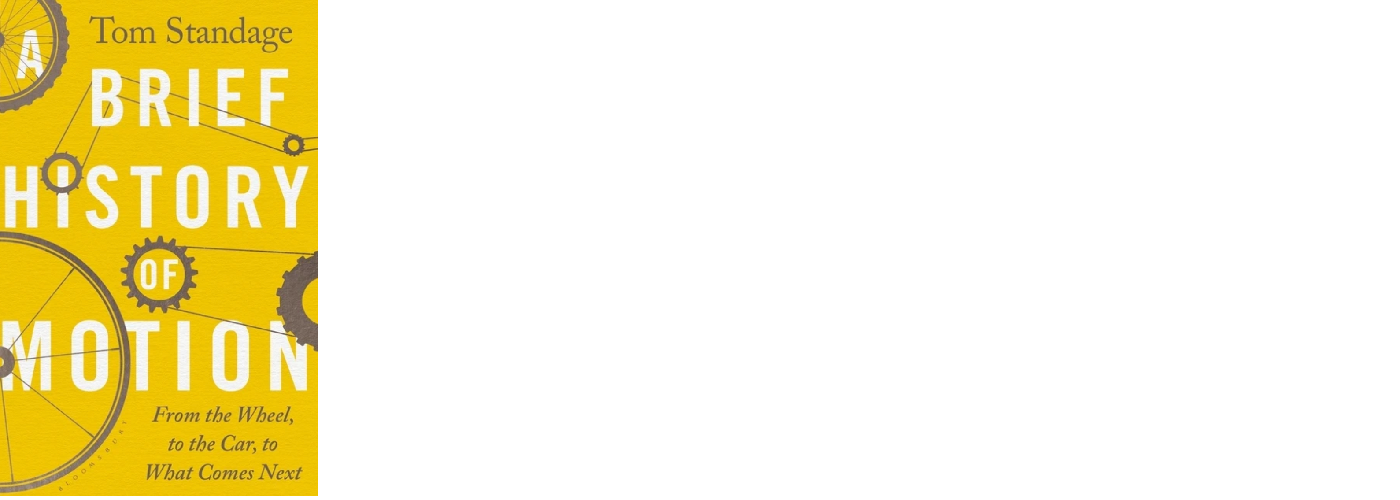Book of the week: A Brief History of Motion by Tom Standage
Standage’s history of wheeled transport is richly rewarding

Tom Standage is “one of our best writers of non-fiction”, said Howard Schneider in The Wall Street Journal. His “niche” is the history of technology – but always with one eye on the future. When he finds the right subject, as he did in his 2013 book Writing on the Wall, about the “roots and repercussions of digital communication”, the results are scintillating.
His latest work – a history of wheeled transport – may not be quite his finest, but it is still richly rewarding. He starts at the beginning, with the advent of the wheel (probably in Eastern Europe in around 3500BC), and then traces its astonishing impact on human history.
Key milestones include the emergence of the chariot, near the Black Sea in around 2000BC, which revolutionised warfare, and of steel-spring horse-drawn carriages (in Kocs in Hungary, hence “coach”) in the 15th century. Inevitably, the story becomes busier as it approaches the present: the early 19th century saw the birth of the steam carriage and the steam train, and then of course came the car – the most transformational vehicle of all, and “the crux” of the book.
The Week
Escape your echo chamber. Get the facts behind the news, plus analysis from multiple perspectives.

Sign up for The Week's Free Newsletters
From our morning news briefing to a weekly Good News Newsletter, get the best of The Week delivered directly to your inbox.
From our morning news briefing to a weekly Good News Newsletter, get the best of The Week delivered directly to your inbox.
Ironically, the car’s great appeal in the early days was as a means of reducing “pollution and congestion”, said James McConnachie in The Sunday Times. City centres in the late 19th century were crowded, noisy and filthy. By the 1890s, 300,000 horses were living in London, each producing 10kg of dung a day. The stuff “was piled so high that streets became impassable”.
Cars solved this problem at a stroke. Intriguingly, many of the earliest ones were electric. In the 1890s, an electric taxi service briefly flourished in US cities, and in 1897 the bestselling car in America – the Columbia Motor Carriage – was powered by a battery.
Electric cars lost out to their petrol-powered counterparts because they had many of the problems people still complain about today, said Simon Winchester in The New York Times: they weren’t much good for long journeys; charging was often a problem.
The “automotive age” that followed was indelibly associated with the internal combustion engine – and Standage documents it with “masterly clarity”.
A free daily email with the biggest news stories of the day – and the best features from TheWeek.com
In the final chapter, he considers the future of the car. It’s a pity in a way, because the world he depicts – of self-driving cars, “Ubers everywhere”, drone deliveries, electronic highways – is so dreary. Still, for “fogies like me” who “prefer to recall the lasting charms of the wheeled age”, this “eminently readable” book contains a great deal to fascinate.
Bloomsbury 272pp £20; The Week Bookshop £15.99

The Week Bookshop
To order this title or any other book in print, visit theweekbookshop.co.uk, or speak to a bookseller on 020-3176 3835. Opening times: Monday to Saturday 9am-5.30pm and Sunday 10am-4pm.
-
 Trump’s poll collapse: can he stop the slide?
Trump’s poll collapse: can he stop the slide?Talking Point President who promised to ease cost-of-living has found that US economic woes can’t be solved ‘via executive fiat’
-
 Sudoku hard: December 7, 2025
Sudoku hard: December 7, 2025The daily hard sudoku puzzle from The Week
-
 Codeword: December 7, 2025
Codeword: December 7, 2025The daily codeword puzzle from The Week
-
 Wake Up Dead Man: ‘arch and witty’ Knives Out sequel
Wake Up Dead Man: ‘arch and witty’ Knives Out sequelThe Week Recommends Daniel Craig returns for the ‘excellent’ third instalment of the murder mystery film series
-
 Zootropolis 2: a ‘perky and amusing’ movie
Zootropolis 2: a ‘perky and amusing’ movieThe Week Recommends The talking animals return in a family-friendly sequel
-
 Storyteller: a ‘fitting tribute’ to Robert Louis Stevenson
Storyteller: a ‘fitting tribute’ to Robert Louis StevensonThe Week Recommends Leo Damrosch’s ‘valuable’ biography of the man behind Treasure Island
-
 The rapid-fire brilliance of Tom Stoppard
The rapid-fire brilliance of Tom StoppardIn the Spotlight The 88-year-old was a playwright of dazzling wit and complex ideas
-
 ‘Mexico: A 500-Year History’ by Paul Gillingham and ‘When Caesar Was King: How Sid Caesar Reinvented American Comedy’ by David Margolick
‘Mexico: A 500-Year History’ by Paul Gillingham and ‘When Caesar Was King: How Sid Caesar Reinvented American Comedy’ by David Margolickfeature A chronicle of Mexico’s shifts in power and how Sid Caesar shaped the early days of television
-
 Homes by renowned architects
Homes by renowned architectsFeature Featuring a Leonard Willeke Tudor Revival in Detroit and modern John Storyk design in Woodstock
-
 Film reviews: ‘Hamnet,’ ‘Wake Up Dead Man’ and ‘Eternity’
Film reviews: ‘Hamnet,’ ‘Wake Up Dead Man’ and ‘Eternity’Feature Grief inspires Shakespeare’s greatest play, a flamboyant sleuth heads to church and a long-married couple faces a postmortem quandary
-
 We Did OK, Kid: Anthony Hopkins’ candid memoir is a ‘page-turner’
We Did OK, Kid: Anthony Hopkins’ candid memoir is a ‘page-turner’The Week Recommends The 87-year-old recounts his journey from ‘hopeless’ student to Oscar-winning actor